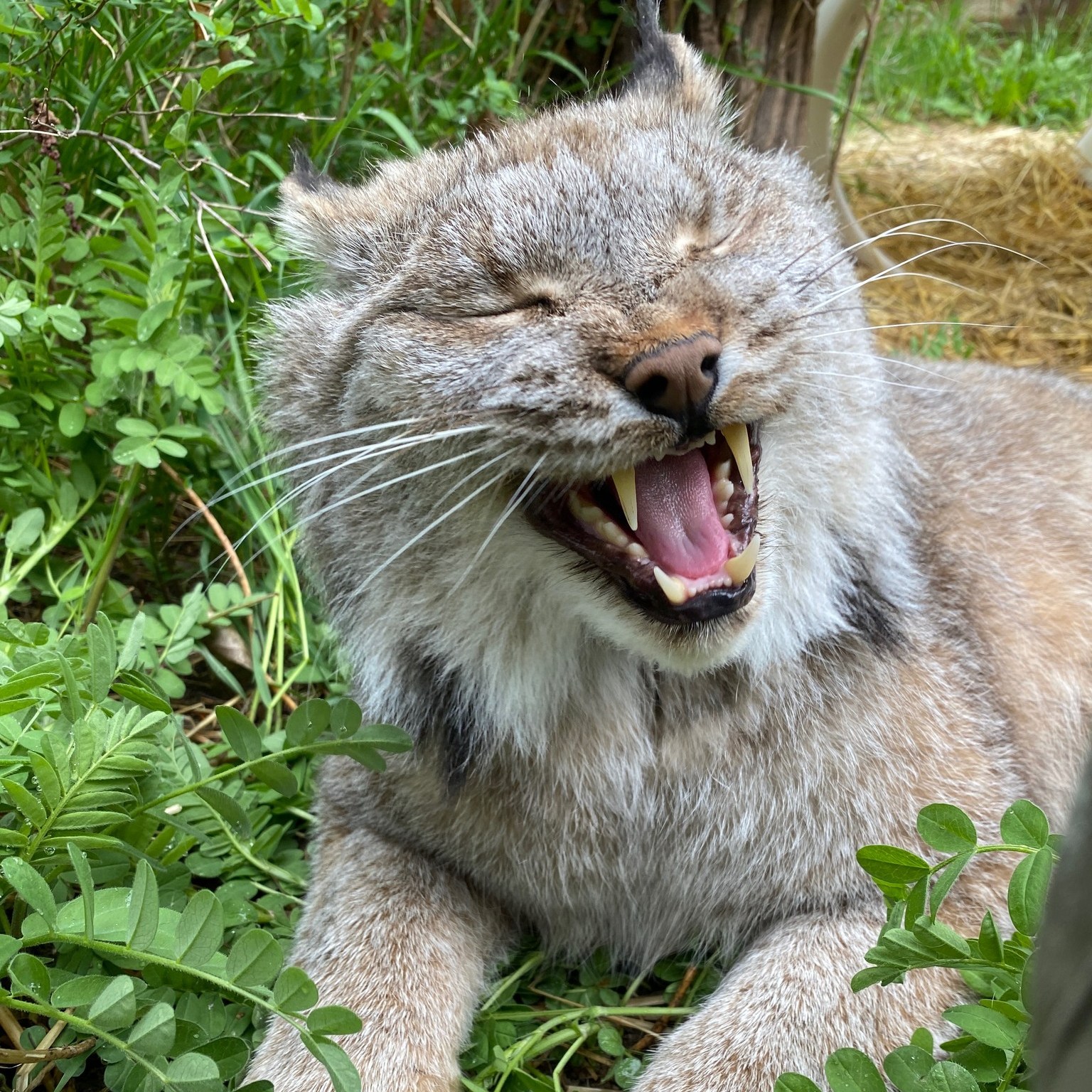- The behavioral nuances and environmental significance of Fierca, the Canada lynx in captivity.
- The vital role of zoo management in promoting species conservation and education.
- The interplay between wildlife photography and conservation efforts within zoological environments.
- Key challenges in maintaining Canada lynx’s natural behavior and habitat conditions in captivity.
- The broader implications of “Just cheesin'” moments for wildlife conservation messaging and public engagement.
The image of Fierca, the Canada lynx, captured in a moment of seeming delight, her eyes squinted and mouth wide open, has become a small window into the complex lives of captive animals in modern zoology. This photographic moment, snapped by Caregiver Sam, offers a delightful and intimate glimpse into the demeanor of one of North America’s more elusive creatures. Yet behind the charm of these instances, often referred to colloquially as ‘Just cheesin’, lie profound lessons and insights into zoological management, animal behavior, and conservation efforts.
Fierca’s portrait is more than simply a visual treat; it represents the success of contemporary zoo environments in creating spaces conducive to the expression of natural behaviors. Canada lynx, known scientifically as Lynx canadensis, are solitary, secretive animals with wide-ranging territories in the wild. In captivity, these animals require expertly designed enclosures that balance their need for space with the limitations of a contained environment. This challenge is met by incorporating varied terrain, adequate vegetation, and enrichment activities that simulate hunting and foraging behaviors.
Zoo management teams, consisting of biologists, veterinarians, and specialized caregivers, work tirelessly to replicate the lynx’s northern boreal forest ecosystem. Through a mix of art and science, these professionals craft habitats that satisfy the physical needs of these predators and stimulate their intrinsic predatory instincts and cognitive functions. Fierca’s candid photograph is thus a testament to the well-being and mental health of the lynx within her artificial home.
Photography in this setting serves as a powerful tool for education and engagement. Caregiver Sam’s image has the potential to evoke interest and concern for the lynx, encouraging the public to learn about the species and its conservation status. This visual medium translates the scientific details of a lynx’s life into a palpable narrative that resonates with viewers on an emotional level. By fostering a connection between the public and wildlife, photographs like these can catalyze support for conservation initiatives and raise awareness about the plights of lesser-known species.
The role of such ‘Just cheesin” moments in conservation messaging cannot be overstated. They function as ambassadors for their species, breaking down barriers of unfamiliarity and apathy. When applied to wildlife, the term “Just cheesin’,” often used in social media contexts to describe a cheesy grin or a moment of happiness, captures not only the notion of animals but also the essence of their daily experiences within the confinement of a zoo. It humanizes the subjects, making their survival and well-being a personal concern for many.
However, the challenges of maintaining such healthy and expressive animals as Fierca are manifold. The Canada lynx’s natural behavior includes roaming vast distances, which is inevitably constrained in captivity. Zookeepers, therefore, must get creative in addressing this issue. Building verticality into enclosures and implementing dynamic elements that can be regularly altered helps stimulate the environment. Engaging the animal with scents, puzzles, and feedings that mimic the irregularity of wild hunting can also contribute to a lynx’s quality of life.
Beyond animal husbandry, the Canada lynx poses a bellwether for broader environmental health. These predators sit high on the food chain, and their presence and population health can indicate the condition of the ecosystem at large. Conservation efforts for the Canada lynx extend outside zoo walls and into legal and ecological action plans geared toward protecting their natural habitats. Efforts in this sector include addressing climate change, habitat destruction, and human-wildlife conflict, all of which threaten the lynx and countless other species.
The wider implications of this photographic slice of Fierca’s life span conversations about biodiversity loss and species preservation. Her quaint expression can ignite discourse on captive animal welfare, the ecological ramifications of habitat loss, and the power of individual organisms to represent broader environmental messages. The ‘Just cheesin’ moment thus becomes a pivotal starting point for deeper exploration into zoological science, environmental policy, and societal values concerning nature.
In the field of wildlife conservation, such images offer a beckoning hand to the general public, inviting them to participate in the grand narrative of natural preservation. It showcases the spectrum of life that requires human stewardship and impresses upon the viewer the shared responsibility to perpetuate species and safeguard our planet’s biodiversity.
Ultimately, the intersections of Fierca’s ‘Just cheesin” expression, the expertise of zoo management, and the aims of wildlife preservation compose a rich tapestry of challenges and achievements in modern conservation efforts. They underscore that our understanding and approach to the natural world continue to evolve as we recognize our influence on and interconnectedness with the diversity of life on Earth. Through education, engagement, and emotional connection, each ‘Just cheesin” snapshot has the power to turn passion into action for the sake of creatures like Fierca, the Canada lynx, and the environments they symbolize.
*****
Source Description
Just cheesin’ 😆
📸Fierca, the Canada lynx squints her eyes with her mouth open. Thank you Caregiver Sam for this photo!

